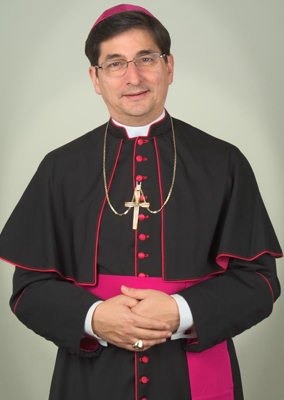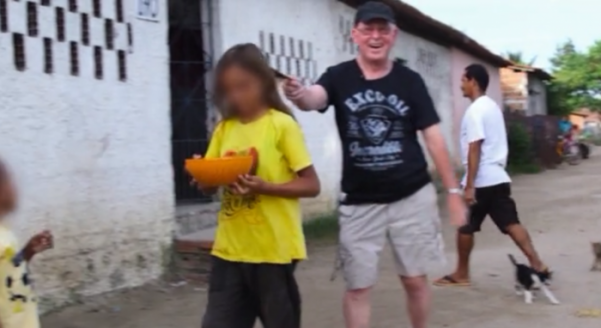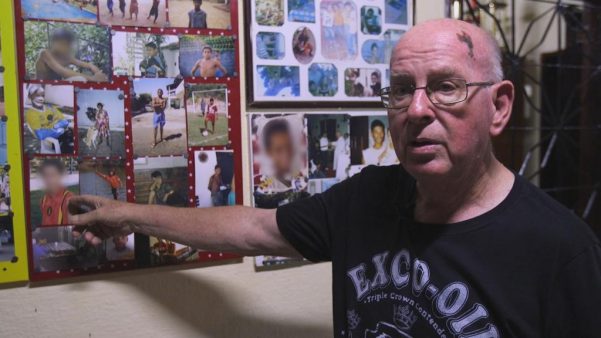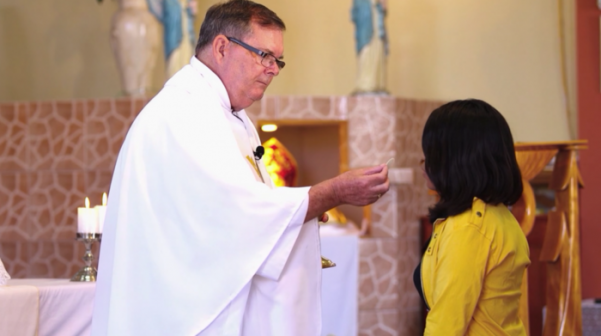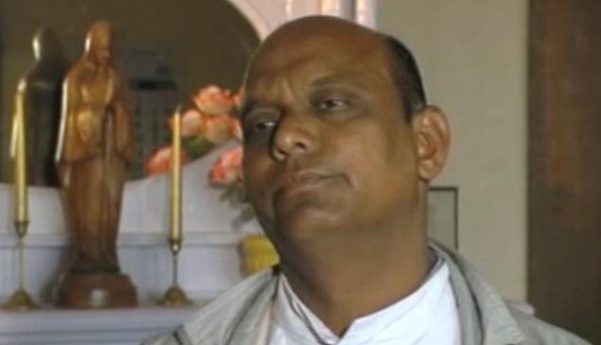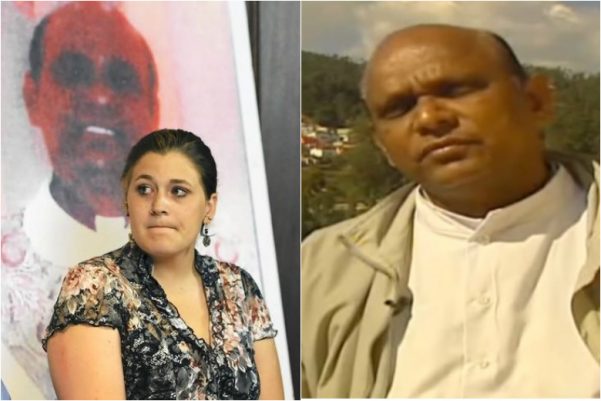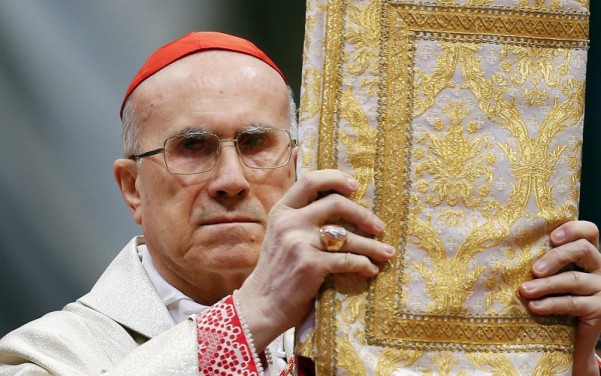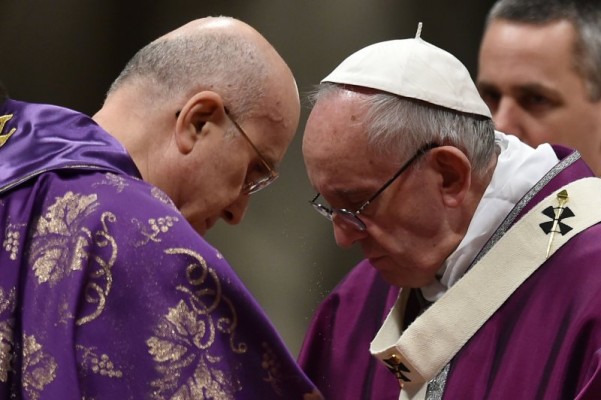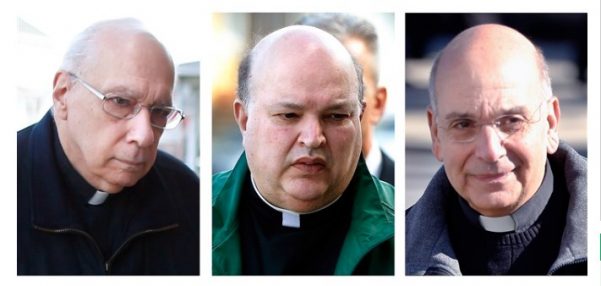
By Peter Smith
Hours of testimony and legal jousting led to a quick conclusion Wednesday afternoon when a judge ordered three Franciscan priests to stand trial on charges of conspiracy and endangering the welfare of children for their oversight of a sexually abusive friar.
Blair County District Judge Paula Aigner made the ruling without elaborating after a prosecutor argued that the three put hundreds of children in harm’s way over nearly two decades by assigning the late Brother Stephen Baker to work among them.
“The safety of children was on the line,” Deputy Attorney General Daniel Dye said during closing arguments. The friar’s supervisors responded as a “bureaucracy,” he said, informing their insurance company but not Baker’s supervisors or parents at Bishop McCort Catholic High School in Johnstown. They decided “how much risk was appropriate to expose other people’s children to,” he said.
Defense lawyers countered that the priests knew little of what is now known about Baker’s attacks — and that they acted responsibly on what they knew.
“It’s easy to Monday-morning quarterback and say Baker was a disgusting man,” said Charles Porter, representing the Very Rev. Giles Schinelli. But, he said, “there is no evidence of any conspiracy.”
But Mr. Porter said afterward he wasn’t surprised by the decision because the burden of proof to send a case to trial is lower than for a conviction, which would require proof beyond reasonable doubt.
The hearing took place at Blair County Courthouse. Judge Aigner set a June 3 arraignment date. She also rejected motions to dismiss the cases under the statute of limitations.
All three of the defendants are former ministers provincial for the Franciscan Friars, Third Order Regulars of the Immaculate Conception Province, based here in Hollidaysburg. In addition to Father Schinelli (who led the order from 1986 to 1994), the other defendants are the Very Revs. Robert J. D’Aversa (1994-2002) and Anthony Criscitelli (2002-2010).
They sat wordlessly behind their attorneys during the proceedings, dressed in black clerical garb.
Baker committed suicide in January 2013 at the Hollidaysburg monastery when the enormity of his offenses became publicly known. Authorities now say he molested more than 100 children in Johnstown and elsewhere, but this case hinges on what his supervisors knew and when they knew it.
Attorneys for the three Franciscans aggressively cross-examined the investigators who testified in the case. The lawyers argued there is no evidence among the 8,000 pages of internal Franciscan documents seized by authorities that show the three ever sat down together to talk about what they knew of Baker’s assaults and how to handle him.
Special Agent Jessica Eger of the state Bureau of Criminal Investigation maintained that Father Schinelli knew of an allegation against Baker in the early 1990s, reported it to the province’s insurance company, but never told officials at Bishop McCort.
Mr. Porter said the allegation was vague and that Father Schinelli referred Baker to a mental health clinic, but that the friar passed the clinic’s psychological evaluation, which found no evidence of sexually deviant tendencies.
Still, Mr. Dye said no parents, aware of such facts, would have consented to having their child taught by Baker if they had known what his superiors knew.
Father Schinelli assigned Baker to work as religion teacher at Bishop McCort beginning in 1992.
Baker also volunteered as an athletic trainer and molested the athletes he was ostensibly helping with stretching, equipment fitting and therapy.
Baker often used such occasions to grope the players’ private parts and digitally penetrate them anally, according to a grand jury report released in March. A former student testified earlier this month that Baker molested him so many times it came to seem normal and that many fellow students talked of similar experiences.
Retired Bishop McCort High School Principal William Rushin testified that no one told him when he hired Baker in 1992 of any allegation against him, and that he received a positive reference from John F. Kennedy Catholic High School near Youngstown, Ohio — where Baker taught and where victims later came forward.
Mr. Rushin said he never hired any staff member with such an allegation against him.
Father D’Aversa removed Baker from the school in 2000 after another allegation surfaced from an earlier Baker assignment in Minnesota. But Father D’Aversa appointed him as vocations director, giving him regular access to children, including on overnight retreats.
Robert Ridge, representing Father D’Aversa, argued that his client did put numerous restrictions on him.
Even after concerns grow and Father D’Aversa removed Baker from that assignment, Baker continued to work at the Friar Shop — a gift store at the Altoona Mall — and to volunteer at St. Clare of Assisi Church in Johnstown.
“That’s endangering children in the mall,” testified Special Agent Eger. But attorney James Kraus, representing Father Criscitelli, disputed the idea that “you are endangering children by allowing someone to go in public.”
Ms. Eger also said that even though Father Criscitelli put Baker on a “safety plan,” the friar’s supervisor in Hollidaysburg went on a sabbatical and there is no evidence anyone else was assigned to mind him. Father Criscitelli himself was working in Minnesota.
The three priests belong to a tiny group — also consisting of a Missouri bishop and a Philadelphia monsignor — who have ever been charged with covering up for an abuser.
Afterward, a victim’s advocate watching the court proceedings said he was “thrilled” with the judge’s ruling.
“One of the things victims have been waiting for is for the criminal courts to be able to judge these matters,” said Robert Hoatson, a former priest and director of the New Jersey victim support group Road to Recovery.
Complete Article HERE!

